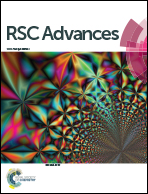Preparation of a new lignin-based anionic/cationic surfactant and its solution behaviour
Abstract
The lignin-based polyoxyethylene (SL–PEG) was synthesized by grafting sodium lignosulphonate (SL) with polyethylene glycol (PEG) long chains. The obtained SL–PEG was formulated with cetyltrimethylammonium bromide (CTAB) at different mass ratios to prepare different lignin-based cationic/anionic surfactants (CA-SLs). The solution behaviour of CA-SL with different mass ratios of CTAB/SL–PEG was studied. The particle size of the CA-SL aggregates was highest when the zeta potential is zero and then becomes small when the zeta potential is positive. It is concluded that the electrical properties and hydrophobic properties of the CA-SL molecules are the fundamental reasons which induce the aggregation behaviour to change. Besides, the results about the Critical Aggregation Concentration (CAC) and surface tension indicate that CA-SL has a stronger ability to lower the surface tension at the air/water interface compared with SL–PEG, but a weaker one than CTAB. However, the CACs of CA-SLs inside the solution are lower than those of both SL–PEG and CTAB. In conclusion, the CA-SL exhibits more obvious physical and chemical properties of polymeric surfactants than SL–PEG whether on the solution surface or inside the solution. The successful preparation of water-soluble lignin-based anionic/cationic surfactants may be a useful method in the efficient utilization of SL.


 Please wait while we load your content...
Please wait while we load your content...